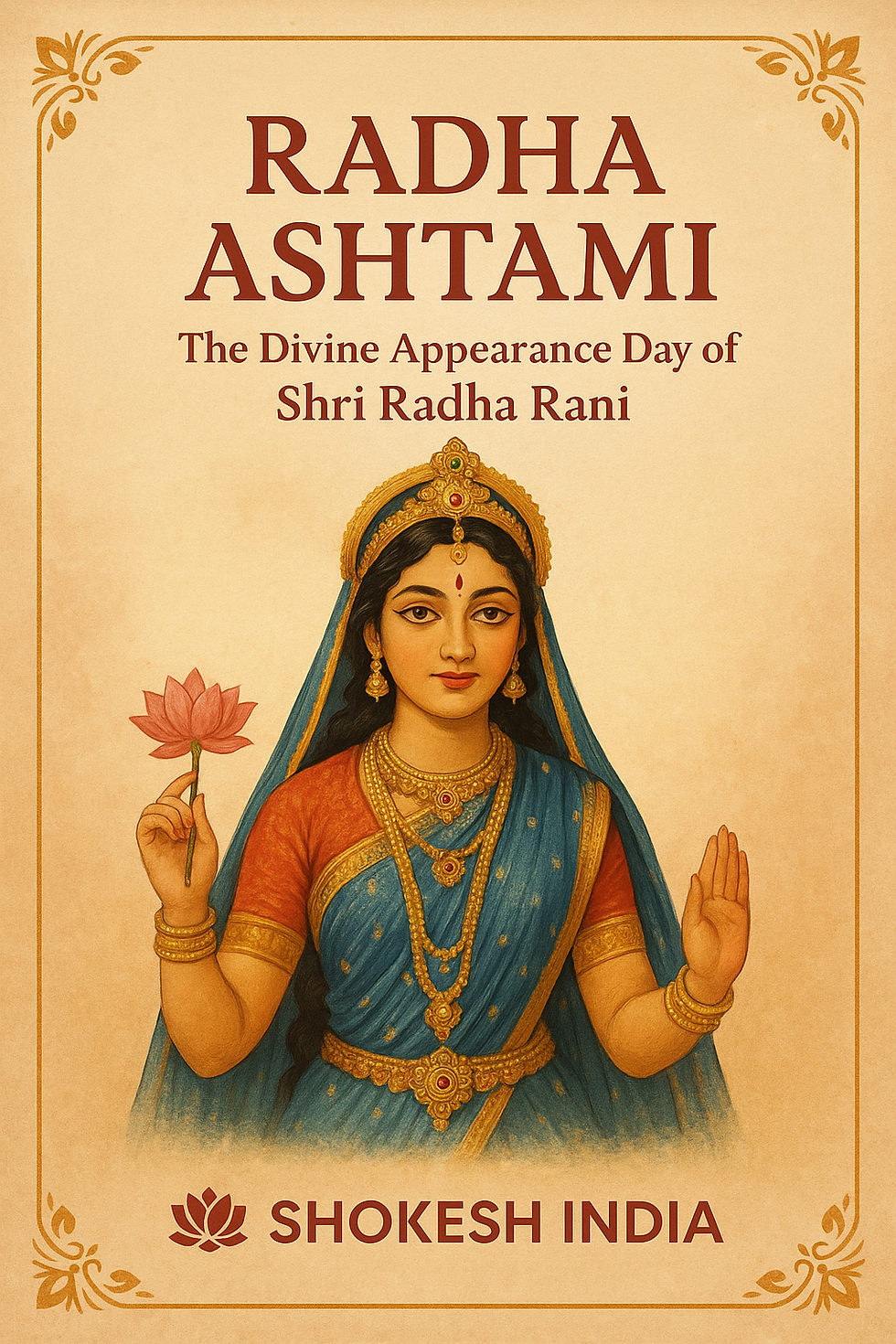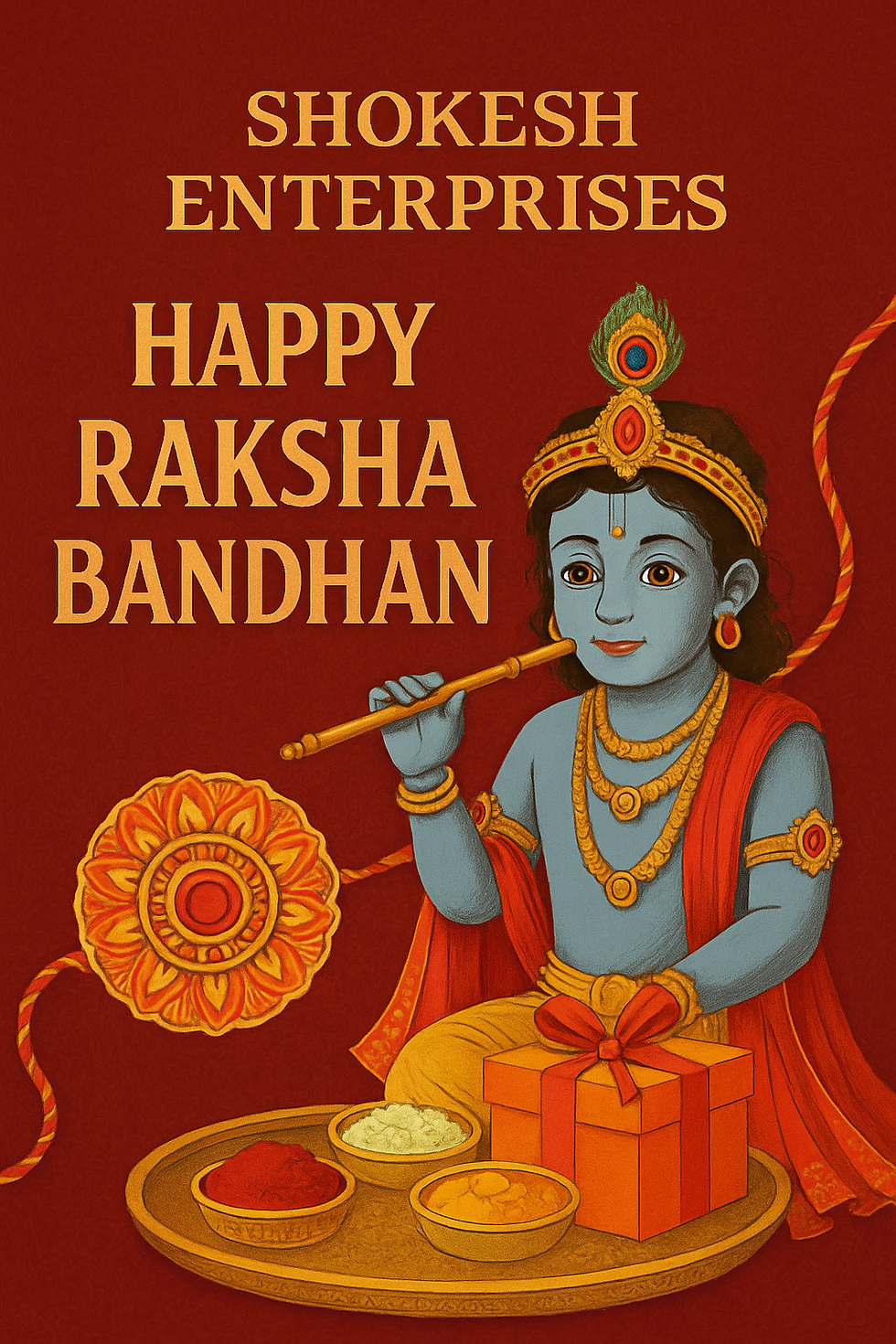The Spiritual Oasis of Radha Raman Vrindavan
- _Shokesh _

- Jun 17
- 4 min read
Nestled in the serene town of Vrindavan, the Radha Raman Temple stands as a vibrant beacon of devotion dedicated to Lord Krishna and his beloved Radha. This sacred site attracts countless pilgrims and tourists each year, drawn by its rich history, stunning architecture, and deep-rooted cultural significance. In this blog post, we will explore the multifaceted aspects of the Radha Raman Temple, tracing its historical background, examining its architectural features and rituals, and highlighting the various festivals celebrated throughout the year.
A Historical Glimpse into Radha Raman Temple
The origins of the Radha Raman Temple date back to the late 16th century and are closely linked to the life of the renowned saint and theologian, Gopal Bhatta Goswami. A prominent figure in the Gaudiya Vaishnavism tradition, Gopal Bhatta was a disciple of Chaitanya Mahaprabhu, who played a significant role in spreading the teachings of devotion to Lord Krishna.
According to records, the temple was built in 1542, after the saint discovered a self-manifested deity (swayambhu) of Lord Krishna in the nearby Sahasra Shindhu Lake. Gopal Bhatta's deep devotion led him to establish this temple at the spot, making it a pivotal center for the worship of Radha and Krishna. Over the centuries, Radha Raman Temple has continued to flourish, becoming a prominent pilgrimage destination for devotees seeking blessings and enlightenment.
Architectural Wonders of Radha Raman Temple
The architecture of Radha Raman Temple is a stunning reflection of the rich artistic traditions prevalent in the region during the 16th century. Constructed primarily in the medieval Indo-Aryan style, the temple features intricate carvings, ornate pillars, and a beautifully adorned sanctum sanctorum (garbhagriha) where the deity resides.
One of the key highlights of the temple’s architecture is its exquisite façade. The use of red sandstone, combined with marble inlays, creates a warm and inviting atmosphere. The entrance of the temple is marked by a grand archway, adorned with floral motifs and carvings that depict stories from the life of Krishna. The temple’s high domes and pointed spires create a striking silhouette against the sky, symbolizing the spiritual ascent that devotees seek.
Inside the sanctum, the deity of Radha Raman is depicted as a beautiful young Krishna playing the flute, symbolizing divine love and devotion. The simplicity of the deity’s attire, combined with the richness of the decorations around, makes it a mesmerizing sight for all visitors.

Rituals and Daily Worship
The daily rituals at Radha Raman Temple are an essential part of its spiritual practice. These rituals serve to deepen the connection between the devotees and Lord Krishna. Each day begins with the sunrise aarti (ceremonial worship) followed by a series of offerings that symbolize the love and service to the divine.
The temple performs various ceremonies throughout the day, including:
Mangala Aarti - This early morning aarti involves singing devotional hymns and offering prayers to awaken the deity.
Bhoga - Special food offerings are prepared and presented to the deity every day. This food is then distributed as prasad (blessed food) to devotees.
Sandhya Aarti - As the sun sets, the evening aarti takes place, followed by the reading of devotional texts and singing of bhajans.
Every year, thousands of pilgrims flock to the temple, especially during significant Hindu festivals such as Janmashtami (the birth of Lord Krishna) and Radha Ashtami (celebration of Radha's birth). These festivals see a surge in activities, vibrant decorations, and elaborate celebrations that draw visitors from around the world.

Festivals that Illuminate the Heart
The spirit of celebration at Radha Raman Temple is palpable during major festivals. These occasions not only strengthen communal bonds among devotees but also serve as a reminder of the divine essence embodied by Krishna and Radha.
The two most notable festivals at Radha Raman Temple are:
Janmashtami - Celebrated with immense fervor, this festival marks the birth of Lord Krishna. The celebrations commence a day before with night vigils, singing, dancing, and reenactments of Krishna’s life. The temple’s atmosphere transforms into one of elation, filled with the sounds of chanting and devotion.
Radha Ashtami - This festival celebrates the birth of Radha, Krishna's eternal consort. Devotees engage in special prayers and rituals, expressing gratitude and devotion. The entire temple is adorned with flowers, and various events are organized to commemorate this divine union.
Each festival features unique customs, such as traditional dances, feasting, and the recitation of holy texts, fostering a sense of unity and joy among pilgrims.
The Spiritual Journey of Devotees at Radha Raman
Visiting the Radha Raman Temple is more than just seeing a historic site; it is a profound spiritual experience. Devotees come not just to offer prayers but also to engage in self-reflection and devotion. The serene environment of the temple helps many individuals connect with their spirituality and understand the teachings of Krishna.
One of the key aspects of the temple’s role in spirituality is the practice of sadhana, or spiritual discipline. Devotees are encouraged to engage in practices such as chanting the holy names of Krishna, participating in devotional singing (kirtan), or meditating in the temple premises. These activities create a peaceful atmosphere, enabling visitors to explore their inner selves and foster a personal relationship with the divine.
Additionally, the temple promotes community involvement through various programs like educational workshops, charitable initiatives, and volunteerism. By encouraging followers to participate actively, the Radha Raman Temple enhances the spiritual journey of its visitors, making it a true sanctuary for the seeking soul.
Final Thoughts
In conclusion, the Radha Raman Temple in Vrindavan stands as a remarkable testament to the spiritual and cultural heritage of India. Its intricate architecture, rich history, and vibrant rituals combine to create a powerful sanctuary for worship and devotion. With each visit, one can experience the divine love of Radha and Krishna, which transcends time and space.
Whether you are drawn by the allure of its historical significance, the beauty of its architecture, or the depth of its spirituality, Radha Raman Temple promises an enriching experience for every seeker. So why wait? Immerse yourself in the divine love of this sacred place and let your heart be illuminated by the teachings of Krishna.




















